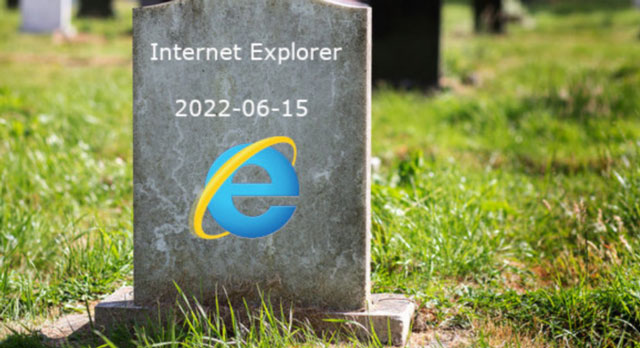
Microsoft stops supporting infamous browser
NEWS ANALYSIS | AGENCIES | Tech giant Microsoft on June 15 stopped supporting the Internet Explorer web browser after nearly 27 years. By June 16, a day after the official end of the browser, the #RIPInternetExplorer hashtag was trending.
“Sad to see it go,” tweeted one individual; “last of the old guard,” said another.
Microsoft announced in mid-2021 that it will retire the company’s Internet Explorer 11 browser in most Windows versions in June 2022.
This means Internet Explorer 11 will not start anymore and Microsoft Edge will be loaded automatically, according to Microsoft.
The company has instead sought to push users to use its Microsoft Edge browser, which it launched in 2015.
IE Mode may load local and remote content that requires specific Internet technologies. Modern web browsers such as Edge, Chrome or Firefox do not support these technologies, and the loading of services may fail completely or functionality may be limited, when these browsers are used.
The move affects most Windows 10 devices, but there are devices on which Internet Explorer remains available. Even on Windows 10, Internet Explorer will be retired in two phases, over the course of the coming months.
Also, Microsoft is retiring Internet Explorer 11 only on certain Windows 10 editions. In particular, IE 11 will not be supported on most supported Windows 10 client editions and on Windows 10 IoT.
Several operating system editions and versions are not affected by the decision: Windows 7 and 8.1, Windows Server and Windows Server LTSC, Windows 10 client LTSC, Windows 10 China Government Edition, and Windows 10 IoT LTSC.
The Windows 7 (ESU) and Windows 8.1 operating systems will run out of support in 2023. Internet Explorer and other Microsoft applications will run out of support at the same time on these devices.
Only Microsoft Edge supports IE Mode, making it an essential application for organisations that require access to content that requires specific Internet Explorer technologies.
Microsoft says Microsoft Edge is faster, more secure and offers a more modern browsing experience than Internet Explorer. Microsoft Edge also has another major selling point; it’s compatible for older, legacy websites and applications via its built-in Internet Explorer mode (‘IE mode’).
Users and organisations may use Internet Explorer Mode to load content that is designed specifically for Internet Explorer technologies. Internet Explorer Mode supports opening select sites permanently in the browsing mode.
Administrators are advised not to uninstall Internet Explorer, as components that are required for Internet Explorer Mode to work properly in Edge will be removed in the process. Administrators who do not require IE Mode on their systems can uninstall Internet Explorer.
Still, the shift will have real-life consequences in some places where Internet Explorer is widely relied on for official websites.
Over the years, Internet Explorer gained a reputation for being slow, clunky, and unreliable compared to newer browsers like Chrome or Firefox.
Infamous for its error message, “Internet Explorer has stopped working,” the browser was prone to crashing regularly, noted one tech guru. Other web surfers called it the “top browser to install other browsers.”
Internet Explorer was first released in 1995 as part of the add-on package for Windows 95. Microsoft made it requirement for computer makers to use the browser as a condition for using Microsoft Windows.
Internet Explorer was the most used web browser in the early 2000s, with a peak of about 95% usage share by 2003. The blue and white “e,” sometimes featuring a gold band became ubiquitous during the days of dial-up internet. But its usage has declined with the launch of new solutions and its lack of compatibility with mobile operating systems like Android and iOS.
Today, Google’s Chrome browser dominates the worldwide browser market, with roughly a 65% share, while Microsoft’s Edge lags with about 4%, according to some reports.
 The Independent Uganda: You get the Truth we Pay the Price
The Independent Uganda: You get the Truth we Pay the Price



